 How STACEE works
How STACEE worksGamma rays Atmospheric Cherenkov Effect Optics Secondary Optics Electronics Trigger System Simulations STACEE Home
The Solar Tower Atmospheric Cherenkov Effect Experiment (STACEE) is a new experiment dedicated to the study of GeV/TeV gamma rays from astrophysical sources. STACEE uses as its collection mirror the large field of solar heliostats at the National Solar Thermal Test Facility near Albuquerque, New Mexico, maintained by Sandia National Laboratories. Although the heliostats have been designed for the collection and concentration of sunlight for solar energy research, the STACEE collaboration has demonstrated that it is also possible to use these mirrors at night to collect the quick flashes of blue Cherenkov light that result from gamma-ray air showers. These gamma rays originate from astrophysical sources at galactic and extragalactic distances. As gamma rays hit the Earth's atmosphere they create an extensive shower of high-energy particles. These particles go faster than the speed of light in air, and thus emit light, or Cherenkov radiation (similar to the sonic boom emitted when a body goes faster than the speed of sound). The radiation (at optical and ultraviolet wavelengths) lasts for only a few nanoseconds at a time and is imperceptible by the human eye. By reflecting the Cherenkov photons to secondary mirrors on the central tower, the flashes can be recorded by a camera of photomultiplier tubes, which will turn the light into a measurable electric signal. The very large mirror area can be exploited to detect gamma rays at an energy threshold significantly lower than achieved by current instruments, thus providing a means of opening an important window in the gamma-ray spectrum.
| Click on portions of the drawing to learn about STACEE components: |
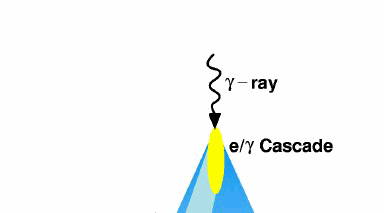 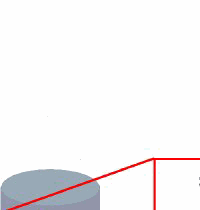   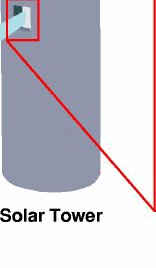 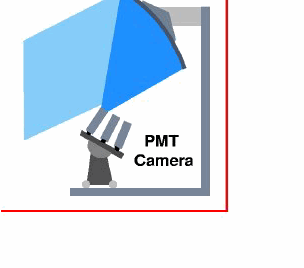 |
The solar tower technique:
1) Cherenkov light is produced by an electronmagnetic
cascade in the upper atmosphere.
2) Heliostat mirrors are used to track an
astrophysical source and reflect Cherenkov
light onto the Solar Tower.
3) A secondary mirror in the tower focuses
light from each heliostat onto a separate
photomultiplier tube.
Elements of the STACEE detection process: (Figures can be enlarged by clicking on them)
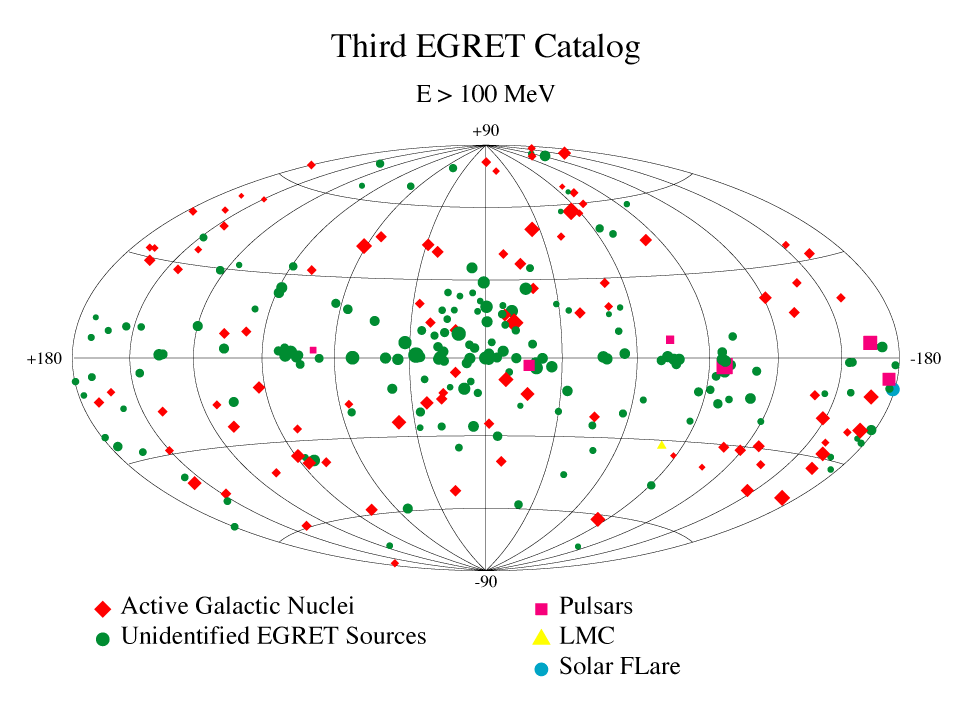 |
 |
| STACEE targets gamma-ray sources like pulsars, supernova remnants, and active galaxies. This all sky map shows the gamma-ray sources detected by the EGRET detector on board the Compton Gamma-Ray Observatory. | Some gamma-ray sources, like the active galaxy Mrk 421, have their peak energy output in the 50-500 GeV range. Thus STACEE is ideally suited to observe these sources. |
| Click here to see STACEE's data on the Crab Nebula | Click here to see STACEE's data on the blazar Mrk 421 |
  |
High energy gamma rays and cosmic rays initiate
particle cascades as they enter the Earth's
atmosphere. Cherenkov light from these air
showers can be detected at ground level.
Since gamma rays create a unique cascade
pattern it is possible to discern between
gamma rays and the more abundant background
cosmic rays. The graphs at left compare shower
structure between gamma rays and protons.
The vertical axis is height in the atmosphere
(in km). The horizontal axis is lateral position
on the group (in units of 100 m). The color
coding is gamma, e+/e-, µ+/µ-, hadrons. |
 |
|
| STACEE uses the heliostats at the National
Solar Thermal Test Facility (NSTTF) near
Albuquerque, New Mexico, to collect Cherenkov
light from air showers. The 37 square meter
heliostat mirrors (at left) reflect the Cherenkov
light to smaller secondary mirrors on the
tower (at right). The heliostat mirrors create
a gamma-ray telescope with enormous collecting
area that makes it possible to explore the
new energy range for gamma rays. By using
the exiting NSTTF facility, observations
in this new 50-500 GeV window can be made
at a fraction of the cost of a satellite
telescope. |
|
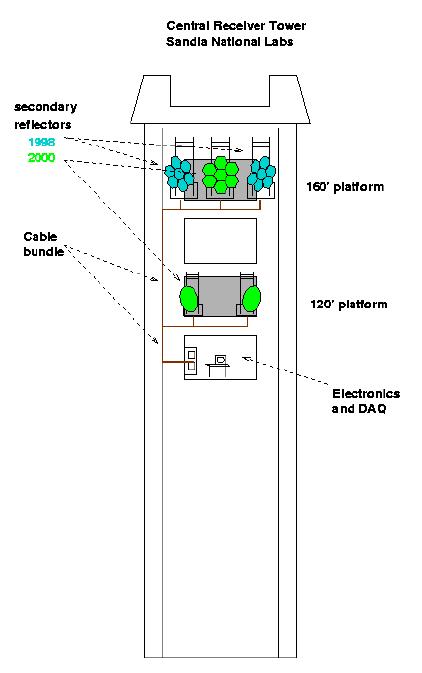 |
STACEE uses five secondary mirrors to direct
light from each heliostat onto a single
light-sensitive
detector. Three mirrors, about 2 m
in diameter,
are located on the upper level of the
tower
(figure at left) and two 1.1 m diameter
mirrors
are located on the lower level of the
tower
(below).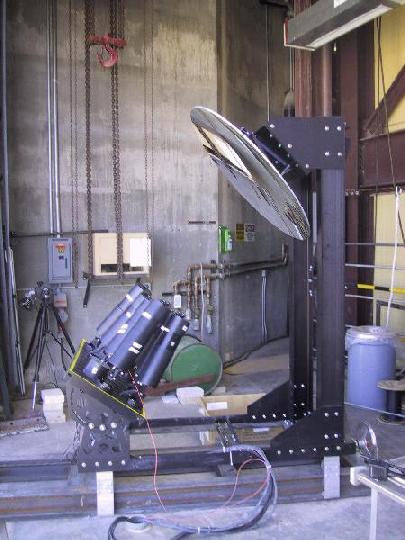 |
||
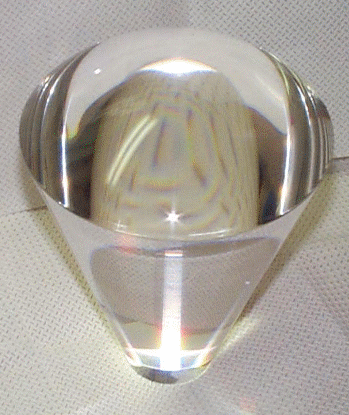
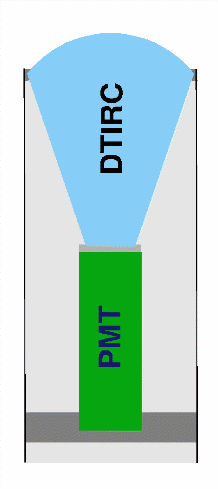 |
The final stage of the STACEE optics concentrates the light from the heliostat image onto a photomultiplier tube. This is accomplished using a Dielectric Total Internal Reflecting Concentrator (DTIRC). The DTIRC only accepts light below a certain incident angle to enter the photomultiplier tube. |
||
 |
|
| Photomultiplier tube pulses are AC-coupled, amplified (x100) and sent down 45 m of RG-213 cable to the STACEE electronics room. These pulses are then sent to a 1 GHz Flash-ADC Digitizer system. Copies of the pulses are sent to discriminators to form the digital trigger. |
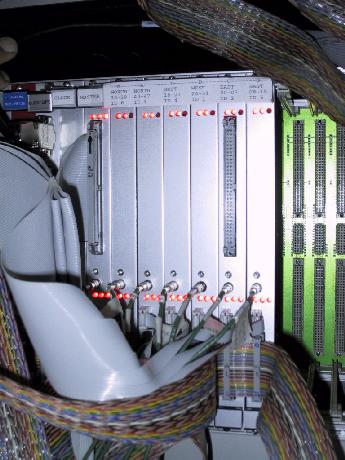 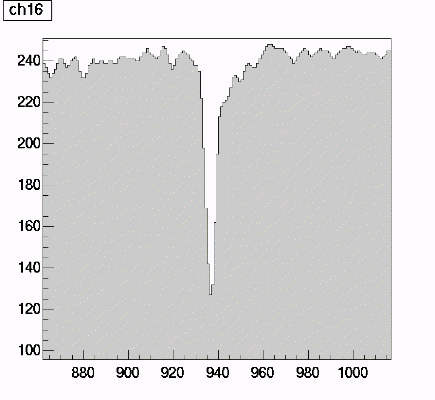 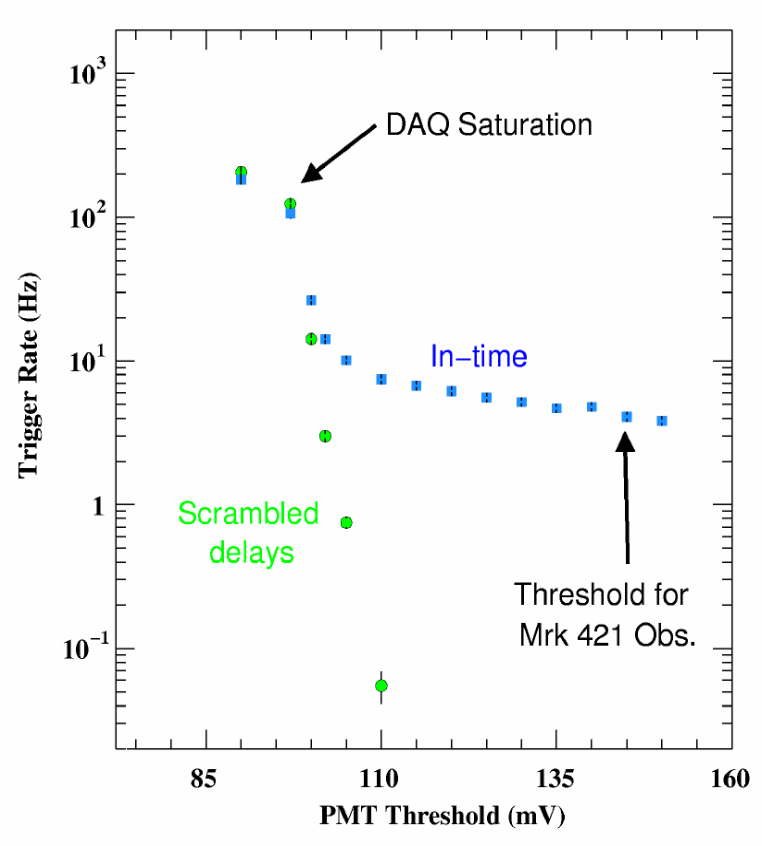 |
| STACEE uses custom built VME boards that
have programmable time-of-flight delays to
form a two level multiplicity trigger. The
delay signals compensate for differences
in light travel time from the shower to the
PMTs. These delays are continually updated
to account for the movement of the target
across the sky. Delays have a 1 ns resolution
and the trigger window is a few nanoseconds.
The middle figure shows a digitized Cherenkov
pulse from the FADC for a single channel
from the STACEE-48 project. The graph at
right shows the trigger rate of STACEE-48
as a function of the discriminator threshold
(a single photoelectron is about 25 mV).
Data taken with randomized delay settings
(green on the graph) show that triggers caused
by fluctuations in night sky brightness become
negligible above 110 mV. STACEE triggers
below 5 photo electrons per tube. |
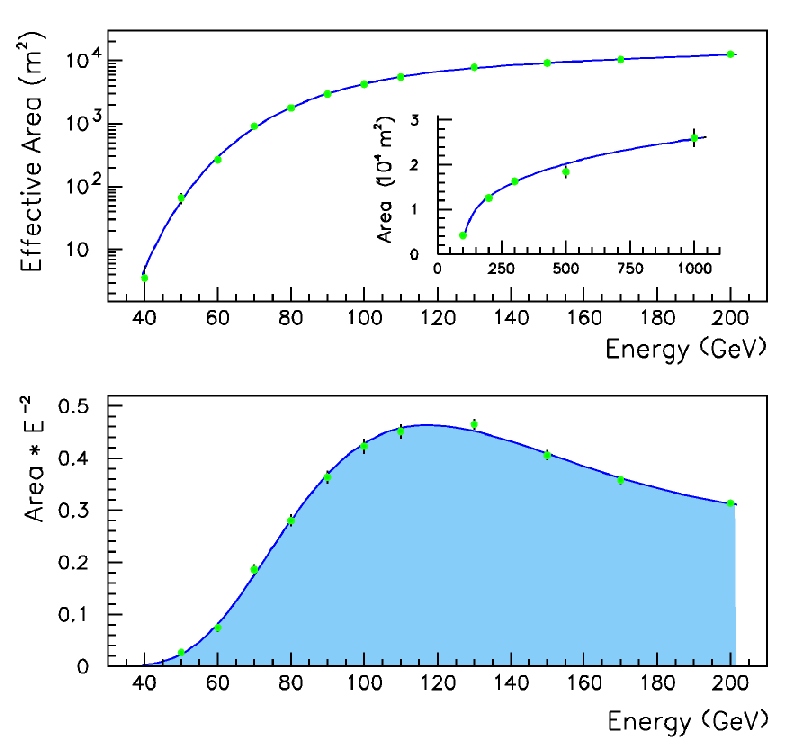 |
STACEE-48 was an initial version with the experiment that ran in 2001. The triggering probability of simulated showers is used to calculate the effective collection area of the array (Top Plot). Convolving this area with an assumed source spectrum of E-2 yields an energy threshold of 120 GeV for a source at zenith (Bottom Plot). |
Shower Reconstruction in STACEE-48:
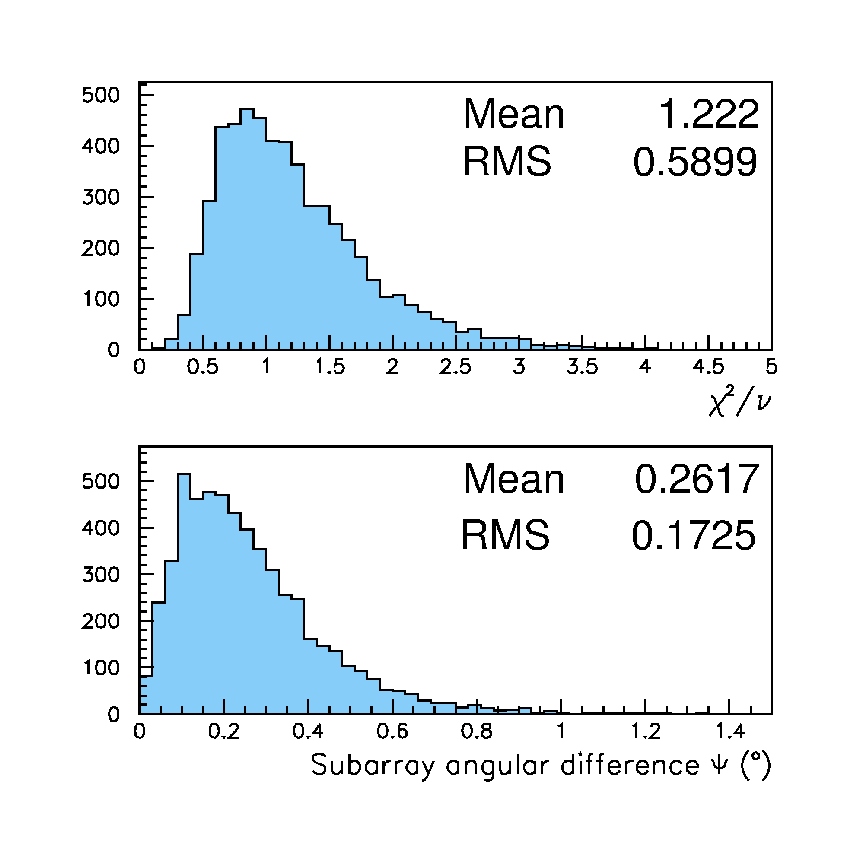 |
The arrival direction of the shower is reconstructed by fitting the photon arrival times (corrected for light travel time from the heliostats) to a spherical wavefront. The top figure shows the distribution of Chi-square-values for this fit. The bottom green plot shows the fit residuals for a single channel - the RMS deviations are typically ~1 ns. The lower blue plot shows the difference in reconstruction angles between two independent halves of the array. The typical reconstruction error should be approximately half of this difference or ~0.15 degrees. |
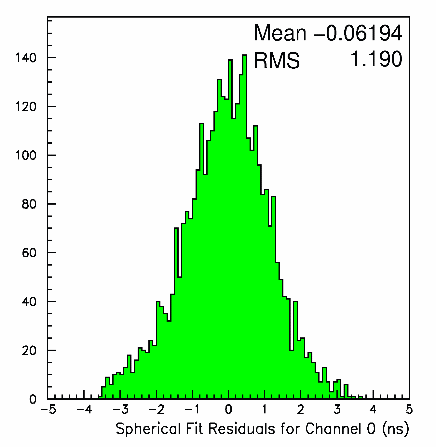 |
Inside STACEE